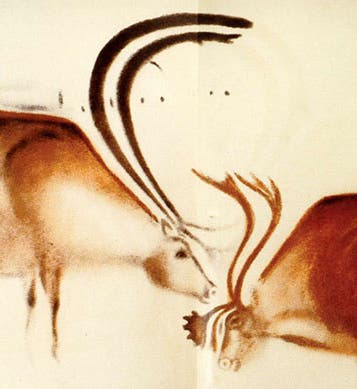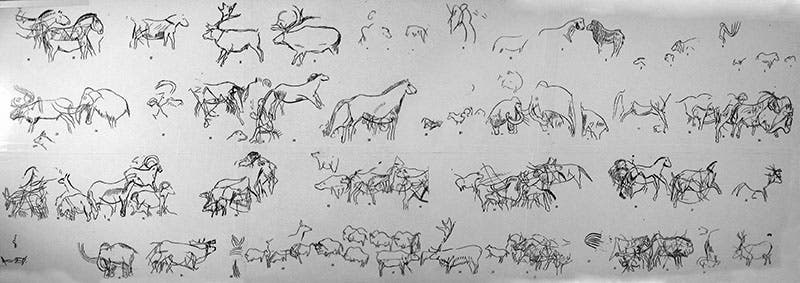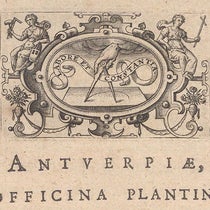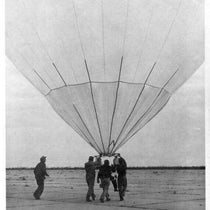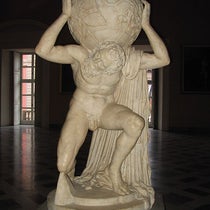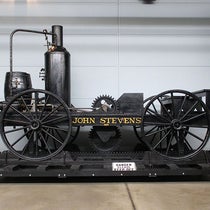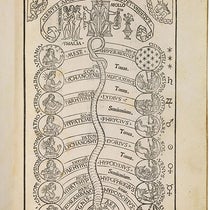Scientist of the Day - Henri Breuil
Henri Breuil, a French archaeologist and priest, and often called the Abbé Breuil, was born Feb. 28, 1877. Breuil visually recorded some of the first cave art discovered in Europe, at Les Combarelles in France in 1901, and at Font de Gaume the next year (first image). Both caves are in the Dordogne region of France, not too far from Les Eyzies-de-Tayac. Breuil did not discover either grotto, but he authenticated them as late Paleolithic (Magdalenian) and then copied the images. The animals at Font de Gaume are engraved, not drawn, so it was no easy task to record them accurately, as Breuil did on one 38-foot-long sheet (second image).
Breuil then went to Spain to investigate the Altamira cave, which had been discovered in 1879 but whose cave paintings had been universally rejected by the prehistory establishment as forgeries. Breuil recognized these bulls and bison as authentic Paleolithic paintings, and with Emile Cartailhac, he published a lavish book in 1906, in which he revealed these exquisite cave paintings to the world, as drawn by Breuil himself. We do not have La caverne d’Altamira in the Library, but we have a number of nearly contemporary books or journals that published copies of the Breuil drawings of Altamira, including a splendid spread in an issue of the Illustrated London News in 1912 (third image).
We exhibited this, and several other works containing Breuil paintings, in our 2012 exhibition, Blade and Bone: The Discovery of Human Antiquity. Exhibit items 41, 42, and 43 all display Breuil drawings of the Altamira paintings. A plate we did not exhibit is our fourth image, from a 1916 paper by Aimé Louis Rutot.
Much later, in 1940, Breuil was called in to investigate a newly discovered cave in south-central France at Lascaux; it has become perhaps the most famous Paleolithic cave painting site in the world.
Our last image shows a panorama of the setting at Les Combarelles, where Breuil saw his first Paleolithic art in 1901. The entrance to the cave is just beyond the house at the right.
Dr. William B. Ashworth, Jr., Consultant for the History of Science, Linda Hall Library and Associate Professor, Department of History, University of Missouri-Kansas City. Comments or corrections are welcome; please direct to ashworthw@umkc.edu.

